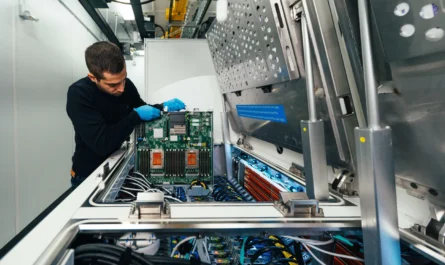Radio Frequency Identification (RFID) technology has emerged as a transformative force, revolutionizing industries and applications across the globe. By utilizing radio waves to wirelessly identify and track objects, RFID has become a fundamental enabler of the Internet of Things (IoT) ecosystem. This innovative technology offers numerous advantages, including enhanced supply chain management, improved inventory control, increased operational efficiency, and new possibilities for automation and connectivity.
At its core, RFID technology consists of three main components: RFID readers, RFID tags, and a backend system. RFID tags, also known as transponders, are small electronic devices that contain a unique identifier and can store additional data. These tags are affixed to objects or embedded within products, enabling wireless identification and tracking. RFID readers, equipped with antennas, emit radio waves and receive signals from the tags in their proximity. The backend system processes and manages the collected data, enabling real-time monitoring, analysis, and integration with other systems.
One of the significant advantages of RFID technology lies in its ability to automate and streamline processes across various industries. In supply chain management, RFID enables end-to-end visibility and traceability of goods, from manufacturing to distribution and retail. By attaching RFID tags to products, companies can track inventory in real time, monitor stock levels, and automate the replenishment process. This improved visibility and accuracy led to reduced out-of-stock situations, optimized inventory levels, and enhanced overall operational efficiency.
The RFID market is a dynamic and rapidly evolving industry with a wide range of applications across sectors. As the technology continues to advance and become more cost-effective, it is expected to play an even more significant role in reshaping industries, improving operational efficiency, and creating innovative solutions to meet the challenges of the modern world.
RFID technology also plays a crucial role in asset management and tracking. By tagging assets, such as equipment, tools, or vehicles, organizations can monitor their location, condition, and usage. This enables better asset utilization, reduces loss or theft, and streamlines maintenance and repair processes. In industries like healthcare, RFID provides valuable solutions for tracking medical equipment, pharmaceuticals, and patient records, improving patient safety, inventory management, and operational efficiency within hospitals and healthcare facilities.
Moreover, RFID technology enhances customer experience and engagement. In retail, RFID enables seamless checkout experiences through contactless payment and automatic product identification. Smart shelves and smart displays equipped with RFID readers provide real-time inventory updates, personalized product recommendations, and interactive shopping experiences. This level of connectivity and data-driven insights empower retailers to deliver personalized services, optimize store layouts, and enhance customer satisfaction.
In addition to its benefits in inventory management and customer experience, RFID technology has made significant contributions to enhancing security and safety measures. RFID-enabled access control systems provide efficient and secure entry management for buildings, offices, and restricted areas. The technology enables automatic identification and verification of authorized personnel, improving security protocols and minimizing the risk of unauthorized access. RFID-based tracking systems also aid in preventing counterfeiting and unauthorized distribution of products by ensuring the authenticity and integrity of goods throughout the supply chain.



